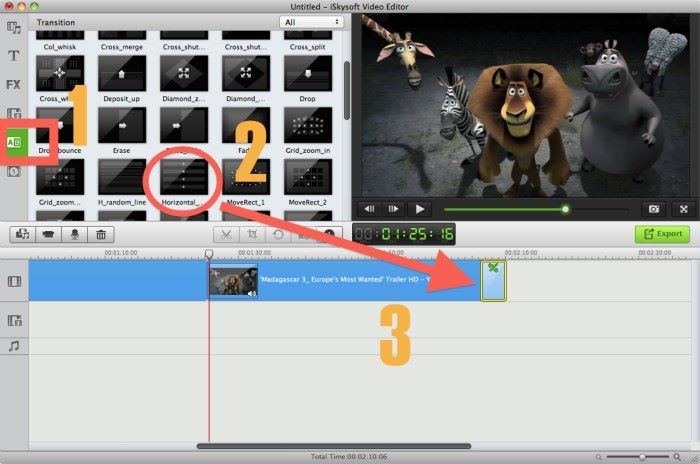

- Movie editor for mac os x 10.5 movie#
- Movie editor for mac os x 10.5 pdf#
- Movie editor for mac os x 10.5 upgrade#
Click on the Annotate button in Preview, located next to the Select button on the top. Movie editor for mac os x 10.5 pdf#
Open up a PDF on your Mac with Preview. Nonetheless, for those who don’t have Acrobat Pro or don’t want to buy it, Preview has become quite powerful especially with the new Annotate toolbar added in Snow Leopard. Although, there are many other features (like creating forms) in Acrobat that are useful for PDFs, it’s not really fair to compare it to Preview. One of the great features in Adobe Acrobat Pro is the ability to annotate (comment, markup, circle, highlight) PDF documents. Screenshots: 2 3-5 Using Annotation Tools You can also adjust the video quality and the folder to save the screen recording. Switch the Microphone to Built-in Microphone: Internal microphone to allow your voice to be recorded with the screen recording. Once the Screen Recording window appears, click the small white triangle on the right. Under File, go to New Screen Recording. Open up QuickTime X in your Applications folder. Another great feature that came with QuickTime X in Snow Leopard is the ability to do screen recording. Both are very affordable apps which record user-actions on Mac OS X, which is especially handy for teaching Photoshop tutorials. Movie editor for mac os x 10.5 movie#
Then you would open up that movie (it becomes a separate file) and trim it to the parts you want.Īside from audio recording, two of the best screen-recording tools for podcasters are iShowU HD Pro and SnapZ Pro X.If you would like to just have the video part (no audio), go to Edit > Select All Excluding Silence.Once you’ve made your selection, click the “Trim” button and save your new movie.Adjust the slider to the parts of the movie that you want. A yellow slider will appear on the QuickTime window.Open up a movie in QuickTime X that you would like to edit (trim).In Snow Leopard, Apple combined the powers of QuickTime Pro into QuickTime X, so now there’s no need to buy a “pro” version. In previous version of Mac OS X, QuickTime Player was very limited in (editing) capabilities unless you owned QuickTime Pro.
 For example, I would type “thx” under the Replace column and then type “Thanks” under the With column. To create one, just click on the “+” button on the bottom. Go to the “Text” section to view current text substitutions already created. Go to Language & Text in System Preferences. Text Substitutionįor a long time, TextExpander used to be (and still is) one of the best apps for expanding user-created “snippets”. Now, Snow Leopard can do that within all your apps. I will be touching on that as well as many other features in Snow Leopard that are worth checking out. One of the more noticeable changes made to the user interface was the layout of several panes in System Preferences. When using memory-hogging apps like Adobe Creative Suite apps I have noticed they are speedier with Snow Leopard. The first change I noticed beside a different desktop background was the free space I got back on my hard drive, an entire 13GB of space.
For example, I would type “thx” under the Replace column and then type “Thanks” under the With column. To create one, just click on the “+” button on the bottom. Go to the “Text” section to view current text substitutions already created. Go to Language & Text in System Preferences. Text Substitutionįor a long time, TextExpander used to be (and still is) one of the best apps for expanding user-created “snippets”. Now, Snow Leopard can do that within all your apps. I will be touching on that as well as many other features in Snow Leopard that are worth checking out. One of the more noticeable changes made to the user interface was the layout of several panes in System Preferences. When using memory-hogging apps like Adobe Creative Suite apps I have noticed they are speedier with Snow Leopard. The first change I noticed beside a different desktop background was the free space I got back on my hard drive, an entire 13GB of space. 
Honestly, I was expecting to notice major visual changes, but I was still glad with the subtle changes that Apple added.
Movie editor for mac os x 10.5 upgrade#
On August 28th, Apple released the long-awaited upgrade to Mac OS X 10.5 - Snow Leopard.







 0 kommentar(er)
0 kommentar(er)
